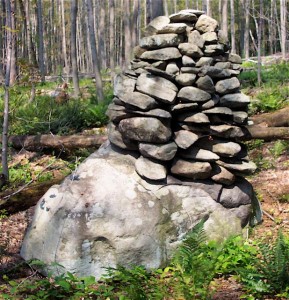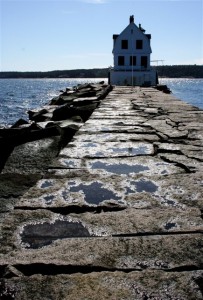
The MISSION of the SWI is to enhance rural New England’s sense of place by focusing public attention on its iconic signature landform, the historic fieldstone wall. Other icons, namely church steeples, town greens, apple orchards, and sugar maples are widely present elsewhere in the United States to the west, carried there by those who migrated westward during the late 18th and 19th centuries. But the stone walls of that tradition were too heavy to carry, and the geologic conditions west of the Hudson River did not allow their replication at the same scale.
The PEOPLE of the SWI are those who follow its website, attend its programs, and correspond with it coordinator. Generally speaking, they are an informal, self-identified coalition from all six New England states and beyond: property owners, town historians, conservationists, philanthropists, teachers, architects, scientists, cultural resource managers, and members of local land trusts, historical societies, planning committees, and gardening groups. I do not keep up a social media feed because it would drain away what little time I have to devote to the SWI. But please check back for intermittent blog postings and updates.
The main ACCOMPLISHMENT of the SWI is heightened awareness of the importance of the historic stone walls to the regional cultural identity. This awareness has led to new state laws and town ordinances for the protection of historic stone walls. These successes have been featured by the National Trust for Historical Preservation, National Public Radio, and recently, an extensive essay in Smithsonian. Stone wall conservation issues have been followed by the newspapers at all levels, including international (International Herald Tribune), national (New York Times and the Washington Post), regional (Boston Globe, Hartford Courant, Providence Journal, Manchester Herald Tribune, Portland Press Herald), and local newspapers. Regional, and national magazine features, have also supported the effort, most notably Yankee Magazine’s the Stone Wall Defender.
I’ve seen the success myself based on anecdotal observations during my travels throughout New England to speak. Along with other stone wall enthusiasts, I’ve seen:
- Fewer eighteen-wheeler tractor trailers hauling pallets of New England fieldstone west on our interstates,
- Fewer backhoes and loaders strip-mining them in the woods,
- Fewer police reports about thefts and stone-wall rustling,
- Fewer neighbors building with strip-mined stone,
- Fewer garden and landscaping supply centers selling strip-mined stone to walk-in customers, and
- An increased supply of stone from primary sources such as quarries and excavations.
Thanks to everyone for your hard work, and for paying attention to where your stone comes from.
Finally, more than a full generation of school children –here and there– have had a chance to pass through elementary school with Stone Wall Secrets in the their school libraries, and one of its teaching kits in their classrooms. In fact, during pre-Covid time there was whole curriculum based on the book, on that integrated the sciences, reading, writing, and measurement.
